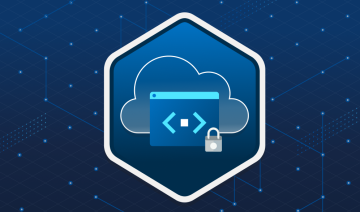سرفصل ها
- Networking Fundamentals 2. TCP/IP and OSI Networking Model 3. Same-Layer Interaction and Adjacent Interaction 4. OSI Layer and Their Functions 5. Fundamentals of LAN 6. Cable Types 7. Ethernet UTP Cabling 8. Fundamentals of IPv4 Addressing and Routing 9. RFC 1918 Private Address Space 10. 3 Math Operations for Subnetting 11. Analyzing Subnet Mask 12. Analyzing Existing Subnets 13. Choosing the Subnets of a Classful Network/Subnet Zero 14. Choosing a Subnet Mask that Meets Design Requirements 15. Ethernet LAN Switching Concepts 16. Switching Logic 17. Internal Processing on Cisco Switches 18. Collision Domains 19. Broadcast Domains 20. Campus LAN Design Terminology 21. Operating Cisco LAN Switches 22. Cisco LEDs Status 23. Main Parts of a Switch or Router 24. Accessing Switch and Router for Configuration 25. Verifying the Network Topology with CDP 26. Basic Configuration Laboratory and Troubleshooting 27. VLAN Configuration 28. VLAN Configuration Laboratory and Troubleshooting 29. Multi VLAN Configuration 30. Multi VLAN Configuration Laboratory and Troubleshooting 31. Trunking Mode Options with Switchport mode command 32. Expected Trunking Operational Mode Based on the Configured Administrative Modes 33. Trunk Encapsulation 34. More Detail Comparing ISL and 802.1Q 35. Controlling Which VLANs Can Be Supported on a Trunk 36. VLAN Trunking Protocol (VTP) 37. Requirements for VTP to Work Between Two Switches 38. VTP Messages 39. Storing VLAN Configuration 40. VTP Laboratory and Troubleshooting 41. Port Security Configuration 42. Port Security Configuration Laboratory and Troubleshooting 43. Spanning Tree Protocol (IEEE 802.1d) 44. Three Classes of Problems Caused by Not Using STP 45. Elections – BID 46. Spanning Tree Roles and Status 47. Reacting to Changes in the Network (STP Timer) 48. Rapid STP (IEEE 802.1w) 49. RSTP Link Type & RSTP Edge Type 50. STP and RSTP Roles Comparison 51. STP Configuration 52. Optional STP Features o Port Fast o Ether Channel o STP Security 53.STP Laboratory and Troubleshooting 54. Router Configuration 55. Differences Between Router and Switch 56. Interface Configuration 57. Routing Protocols Concept and Configuration 58. Routing & Routed Protocol 59. Static Routing Protocol o Static Route o Default Route 60. Dynamic Routing Protocol 61. Routing Protocol Algorithms 62. Metric 63. Administrative Distance 64. Classless and Classful Routing Protocols 65. Distance Vector Routing Protocol Features 66. Link State Routing Protocol Features 67. OSPF Neighbor 68. OSPF Hello Packet 69. OSPF DR 70. OSPF BDR 71. OSPF Area 72. OSPF Conditions for Being a Neighbor 73. OSPF Neighbor States 74. OSPF Configuration 75. Configuring OSPF with Authentication 76. Changing Interface Hello Interval and Dead Interval Timer 77. OSPF Metric 78. Change Default Metric on OSPF 79. Tuning Interface Cost and Bandwidth 80. Changing Reference Bandwidth 81. OSPF Load Balancing 82. OSPF Configuration Laboratory and Troubleshooting 83. EIGRP Features 84. EIGRP Neighbor Discovery 85. EIGRP Topology Exchange 86. EIGRP Choosing Route 87. EIGRP Configuration 88. EIGRP Changing Interface Hello Timer and Hold Timer 89. Default EIGRP Interface Bandwidth and Delay 90. Change Default Metric on EIGRP 91. OSPF and EIGRP Tables in Summary 92. EIGRP Configuration Laboratory and Troubleshooting 93. Typical Combinations of Interface Status Codes 94. Route Summarization 95. Auto and Manual Summarization 96. Telnet and SSH Configuration 97. IP Access Control List 98. IP ACL Concept 99. Types of ACL 100. Standard ACL Configuration 101. Extended ACL Configuration 102. Operators Used When Matching Port Numbers 103. Popular Applications and Their Well-Known Port Numbers 104. Some Extended access-list Commands and Logic Explanations 105. Practice Building Access List Commands 106. Finding IP Addresses/Ranges Matching by Existing ACLs 107. Advances in Managing ACL Configuration 108. Named IP Access Lists 109. Sequence Number in ACL 110. ACL Configuration Laboratory and Troubleshooting 111. WAN Concepts and Configuration 112. Network Address Translation (NAT) 113. Port Address Translation (PAT) 114. Types of NAT 115. Static NAT Configuration 116. Dynamic NAT Configuration 117. PAT Configuration 118. NAT and PAT Laboratory and Troubleshooting 119. Frame Relay Concepts 120. Internet Protocol Version 6 (IPV6) 121. IPV6 Addressing and Summarization Rules 122. Common Multicast Addresses 123. IPv6 Address Configuration Options 124. IPV6 Extended Unique Identifier 64 (EUI64) 125. IPV6 Configuration 126. IPv6 Routing Protocols 127. OSPFv3 Configuration 128. Static IPv6 Routing Configuration 129. IPV6 SHOW Commands 130. IPV6 Laboratory and Troubleshooting 131. Wireless LANs 132. WLAN Standards 133. Encoding Classes and IEEE Standard WLANs 134. WLAN Modes and Names 135. FCC Unlicensed Frequency Bands of Interest 136. WLAN Speed and Frequency Reference 137. WLAN Security Standards 138. Wireless L2 and L3 Devices 139. WLAN Architecture 140. Client Authentication Methods 141. Wireless Privacy and Integrity Methods 142. Cryptography Methods 143. Types of Attacks 144. AAA 145. Security Devices 146. QOS (Quality of Service) 147. Voice QOS 148. Introduction to Virtual Private Networks (VPN) 149. Port Forwarding Configuration on D-Link Modems 150. Port Forwarding Configuration on TP-Link Modems










هیچ دیدگاهی برای این محصول نوشته نشده است.